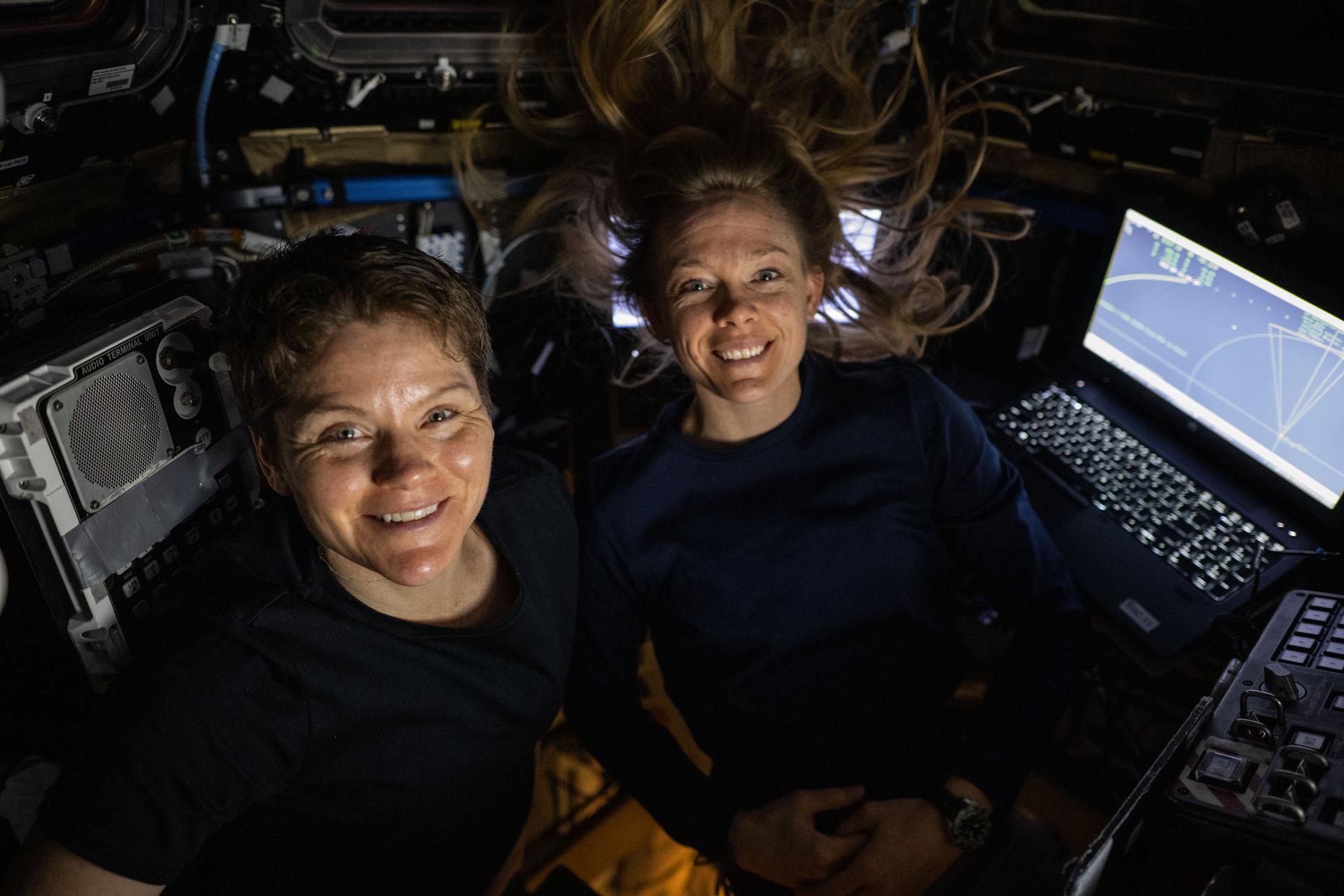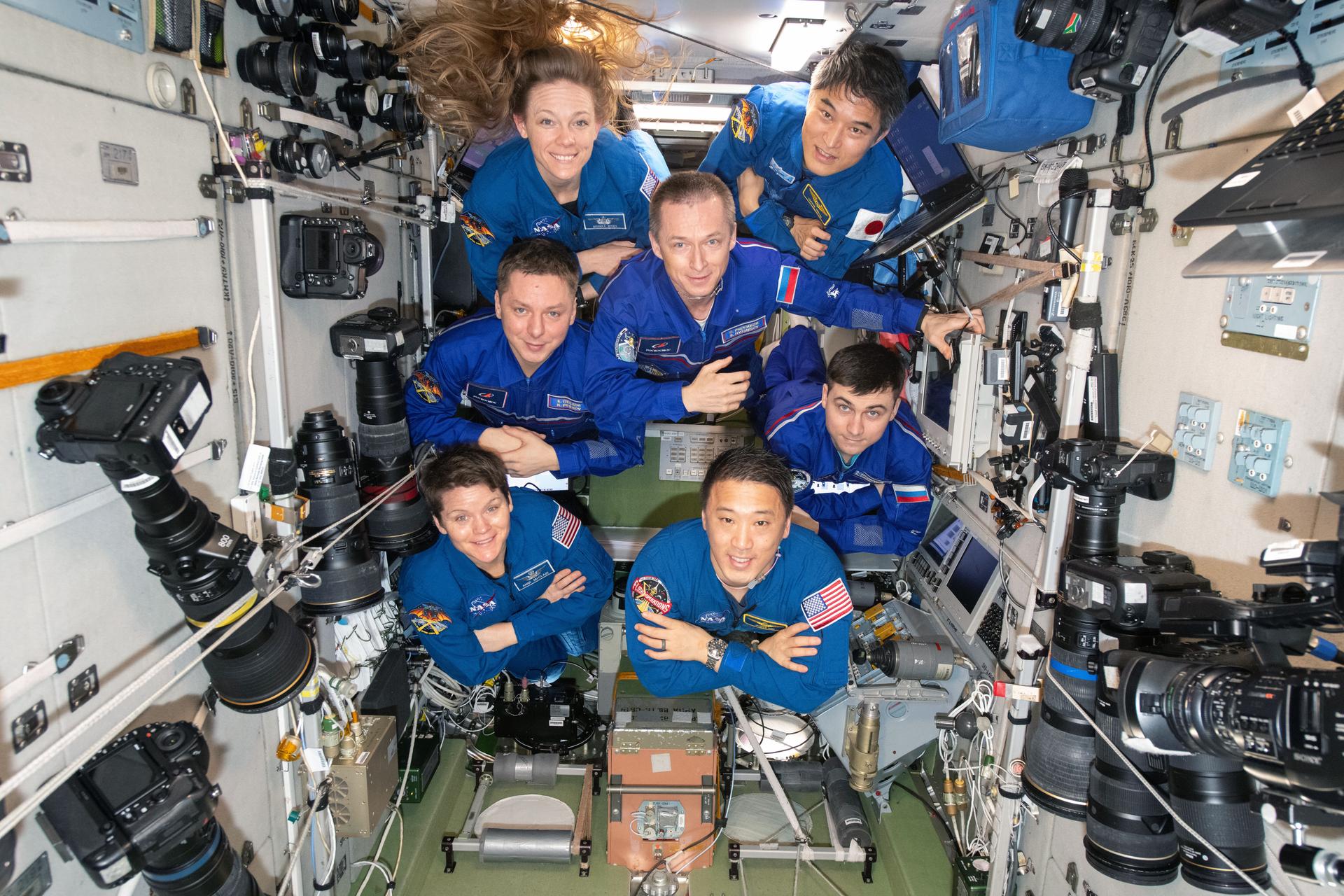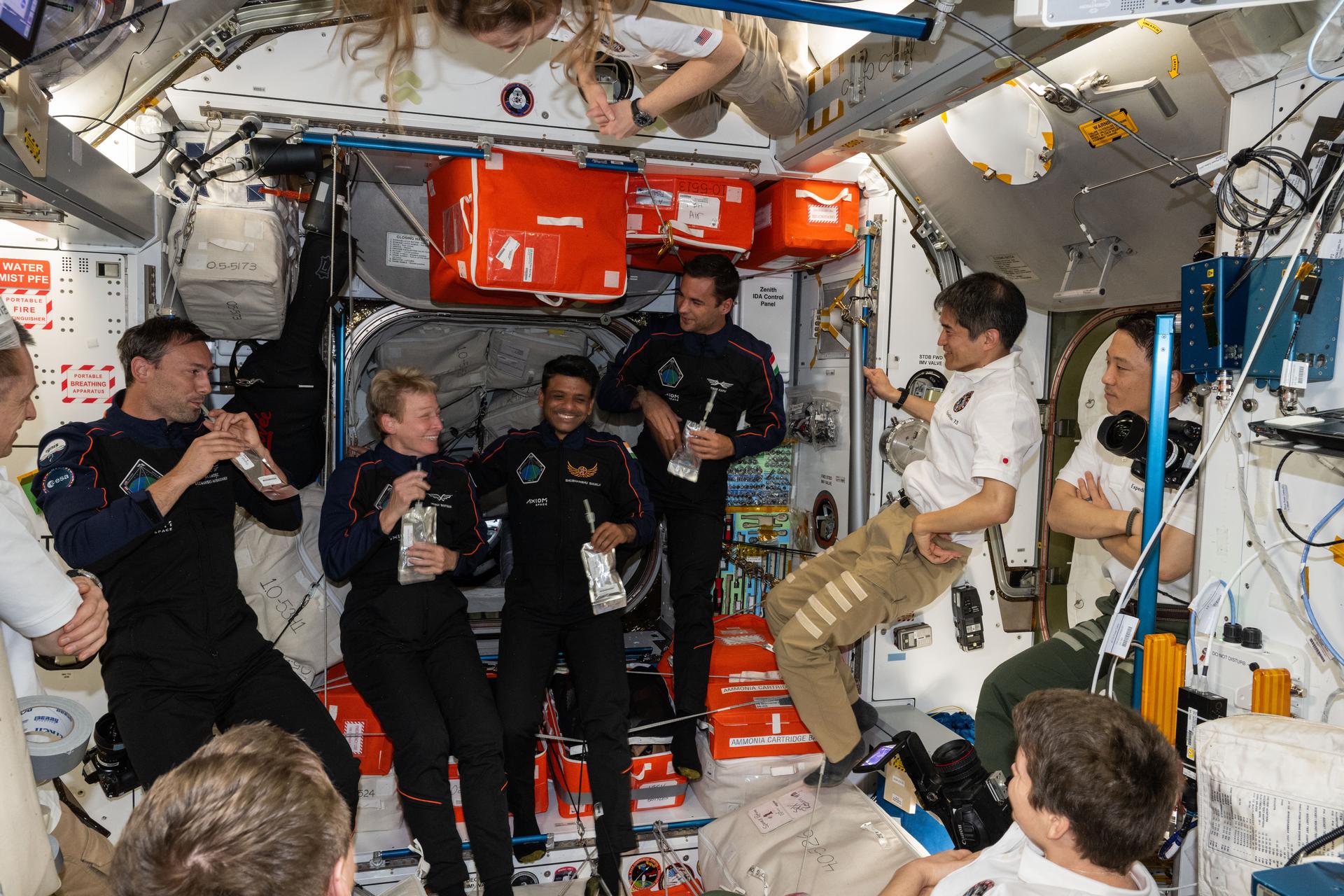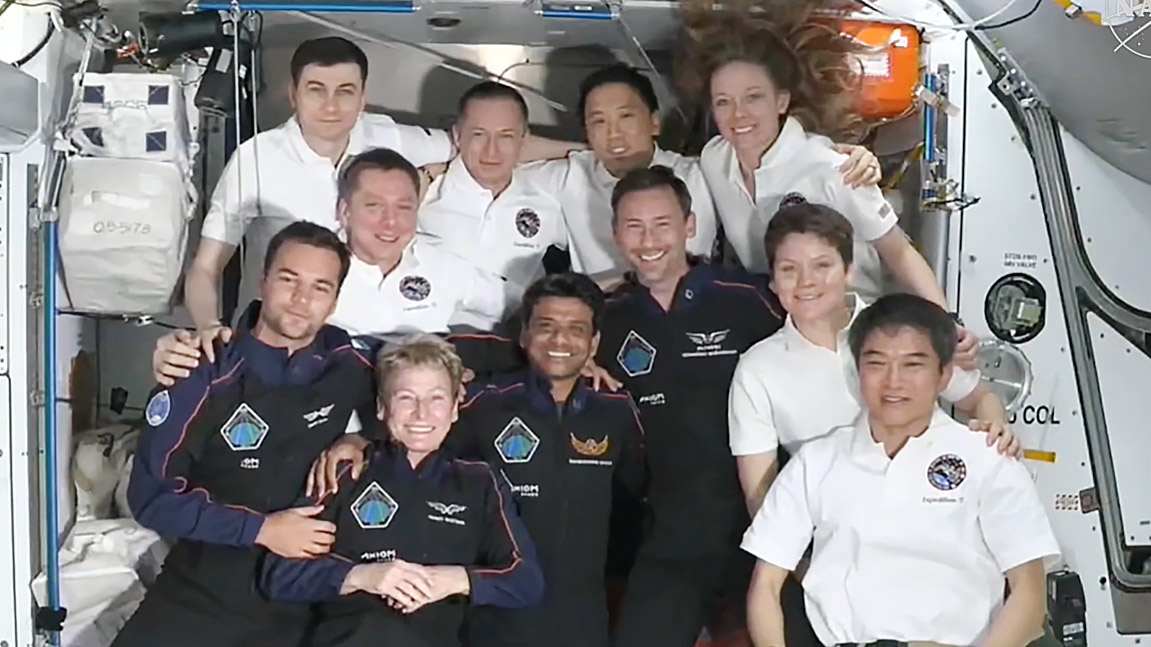Crews Fill Day With Muscle, Heart, and Brain Research Before Cargo Mission Swap
The seven-member Expedition 73 crew wrapped up a weekend of housecleaning and relaxation then kicked off Monday with muscle and brain research aboard the International Space Station. Their Axiom Mission 4 (Ax-4) counterparts worked throughout the weekend and began the week taking a closer look at muscle cells and exploring brain computer interfaces. The public and private biology studies complement each other while the research data and hardware are supported by different organizations.
NASA Flight Engineers Anne McClain and Nichole Ayers joined each other in the Columbus laboratory module exploring electrical muscle stimulation as a supplement to space exercise. McClain operated the biomedical gear from ESA (European Space Agency) that collected data from electrodes measuring the response of Ayer’s leg muscles to electrical signals. Results may help offset space-caused muscle atrophy in combination with shorter, more effective workouts in microgravity.
McClain earlier took a set of tests helping researchers understand how an astronaut’s cognition, the ability to acquire and process knowledge, adapts to weightlessness. Doctors hope to gain insights into potential adverse effects on a crew member’s brain structure and function while living and working in space.
Ayers began her day with NASA Flight Engineer Jonny Kim taking turns processing blood samples for a variety of biology experiments. Ayers performed a blood draw on herself at the beginning of her shift, spun the sample in a centrifuge, then stowed the specimen in a science freezer for later analysis. Kim collected blood samples from Ax-4 private astronauts Peggy Whitson and Sławosz Uznański-Wiśniewski in Columbus for the Bone on ISS study, another ESA investigation, that is exploring space-induced bone loss.
Station Commander Takuya Onishi from JAXA (Japan Aerospace Exploration Agency) worked throughout Monday processing his blood and urine samples for cold stowage and upcoming analysis to understand how his body is adapting to long term weightlessness. Onishi then worked inside the Kibo laboratory module servicing hardware that monitors particulate matter in the station’s atmosphere.
Flight Engineers Sergey Ryzhikov and Alexey Zubritskiy, both Roscosmos cosmonauts, trained on a computer for the arrival and docking of the Progress 92 cargo craft to the Poisk module scheduled for July 5. The duo also finished loading the Progress 90 cargo craft with trash and discarded gear and closed the spacecraft’s hatch before its undocking from Poisk on Tuesday. Fellow cosmonaut and Flight Engineer Kirill Peskov attached sensors to himself for a 24-hours session measuring his heart activity and blood pressure. Peskov then set up the European robotic arm from inside the Nauka science module ahead of ground-controlled robotics tests.
The Ax-4 private astronauts had a science-packed Monday fulfilling research objectives for their home countries. Whitson performed vein scans with the Ultrasound 2 device on Hungarian astronaut Tibor Kapu providing doctors from Budapest, his nation’s capital, insights into how space affects blood pressure, balance, and vision. Indian astronaut Shubhanshu Shukla filmed a video targeted to young Indian students discussing how the digestion system adapts to space. Next, Shukla worked in Kibo’s Life Science Glovebox checking muscle stem cell cultures to learn how to maintain muscle health in space. Uznański-Wiśniewski from Poland wore a specialized headset from ESA to test a brain-controlled computer interface. He then joined Whitson and Shukla filming crew activities for the Astronaut Mental Health study.
Learn more about station activities by following the space station blog, @space_station and @ISS_Research on X, as well as the ISS Facebook and ISS Instagram accounts.
Get the latest from NASA delivered every week. Subscribe here.
Powered by WPeMatico
Get The Details…
Mark A. Garcia







